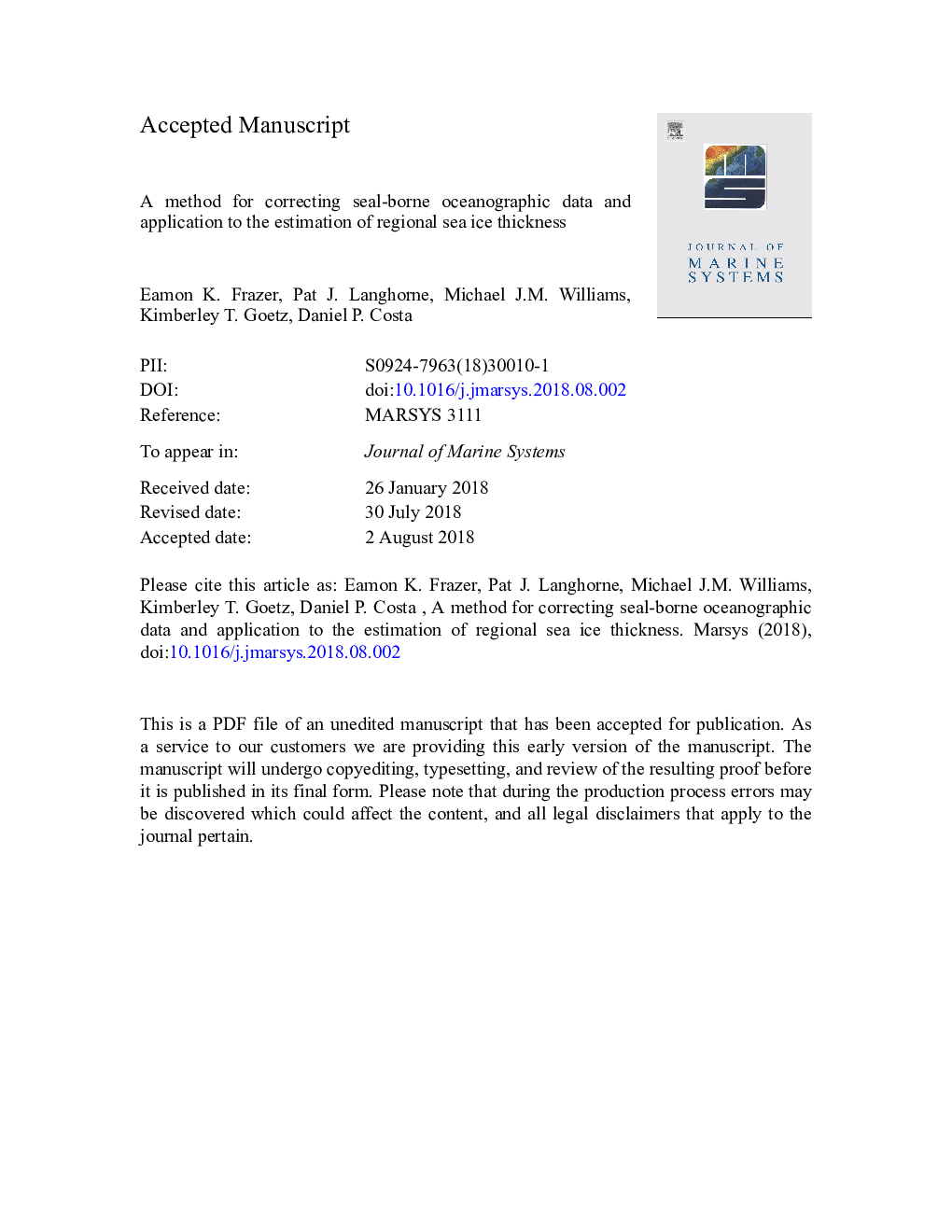| Article ID | Journal | Published Year | Pages | File Type |
|---|---|---|---|---|
| 8885904 | Journal of Marine Systems | 2018 | 30 Pages |
Abstract
The high-latitude oceans surrounding Antarctica are substantially undersampled compared to lower latitudes. Mammal based instruments such as Conductivity-Temperature-Depth Satellite Relay Data Loggers (CTD-SRDLs) present one possible solution. Unfortunately, these are subject to instrument-dependent offsets in absolute salinity. This study investigates a set of satellite-transmitted data collected by CTD-SRDLs mounted on Weddell seals (Leptonychotes weddellii) in the South-western Ross Sea in 2011. The uncorrected salinity offset between devices was found to be up to 1.4â¯gâ¯kgâ1, making the data unsuitable for some oceanographic studies without correction. Here, a correction method was developed that uses profiles from pairs of CTD-SRDLs that are considered to be co-located and to sample the same body of water if they occur within defined time and space windows. Using least squares, a best-fit solution to the matrix of offsets in co-located pairs was found that reduces salinity offsets between the CTD-SRDLs. These offsets are smaller than the original offsets by a factor of 10. A calibrated reference instrument, that was co-located with some of the devices, provided further improvement in the absolute accuracy of all the CTD-SRDLs. Using the corrected CTD-SRDL data we estimate the rejection of salt into the water column by sea ice formation, and derived the time evolution of sea ice thickness in the South-western Ross Sea. Our estimates of regional sea ice thickness are in agreement with direct sea ice thickness measurements taken over a limited area in November 2011, providing further affirmation of our method.
Related Topics
Physical Sciences and Engineering
Earth and Planetary Sciences
Oceanography
Authors
Eamon K. Frazer, Pat J. Langhorne, Michael J.M. Williams, Kimberly T. Goetz, Daniel P. Costa,
